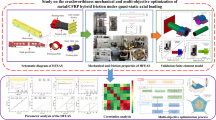Abstract
Ergonomic concerns which include musculoskeletal disorders, cumulative trauma disorders, repetitive strain injuries and repetitive motion injuries prevail as a crucial mode of occupational ill health in the textile industry. Musculoskeletal disorders (MSDs) are major discomfort caused by manual material handling (MMH) resulting in back pain, numbness, nervousness and other functioning problems related to the bone and nervous system. This study aims to identify the actual and potential hazards in the processes like lifting, pushing, pulling, repetitiveness, bending, awkward posture, heat stress, and contact stress involved in the MMH operations in the textile industry and conduct an ergonomic assessment using the various tools like NIOSH (National institute for occupational safety and health) lifting equation (LI), Rapid upper limb assessment (RULA), Rodgers muscle fatigue analysis, Strain index form (SI), 3D Static Strength Prediction Program (3DSSPP), with heartbeat variability, volume of oxygen intake, and calorie consumption of the worker. Identifying and controlling the manual MSDs of the workers in the workplace will lead to an increase in the production rate of the organization and create stress and risk-free atmosphere for workers. According to the results obtained, the risk level of materials’ shifting from tray to examination table at the examination and packing section in industry was found high (LI > 3, RULA score = 6), whereas the risk in the shifting of materials from trolley to tray was moderate (LI = 1 to 3, RULA score > 6). NIOSH and RULA showed almost same responses, but the SI and Rodgers muscle fatigue analysis showed little bit severe than NIOSH and RULA. The heart rate of the persons, who involved in bale unloading, was measured as a range from 120–140 Bpm (heavy work posture > 100 Bpm). 3DSSPP software results showed that a severe force affected the knee and backbone of the workers during the bale handling.







Similar content being viewed by others
References
Ghaly et al., Production, characterisation and treatment of textile effluents: a critical review. J. Chem. Eng. Process. Technol. 5, 1 (2014). https://doi.org/10.4172/2157-7048.1000182
Patil G.G, Yadav R., Nadiger V.G, Raichurkar P.P, Chandrakar K and Chandurkar P. Textile apparel industry: a responsibility towards manpower. Colourage. (2017). https://www.researchgate.net/publications/317169585.
F. Mouras, A. Badri, Survey of the risk management methods, techniques and software used most frequently in occupational health and safety. Int. J. Saf. Secur. Eng. 10(2), 149–160 (2020). https://doi.org/10.18280/ijsse.100201
Kade C.D, “Environmental and health hazards in spinning industry and their control, Indian J. Fibre Textile Res., vol 26, pp 39–43. (2001). http://nopr.niscair.res.in/bitstream/123456789/24911/1/IJFTR%2026(1-2)%2039-43.pdf
K. Maheswaran, N.G. Serrao, S. Senthil Murugan, T. Prabaharan. Acoustic level measurment by noise mapping method and mitigation using acoustic plaster in power press industry. Int. J. Adv. Sci. Technol. 29(7), 11200–11207 (2020). http://sersc.org/journals/index.php/IJAST/article/view/27539
N. Tarafder, Study of ergonomics in textile industry. J. Mech. Robot. 4(3), 32–40 (2019). https://doi.org/10.5281/zenodo.3573916
Özlem. Kaya, Design of work place and ergonomics in garment enterprises. Procedia Manuf. 3, 6437–6443 (2015). https://doi.org/10.1016/j.promfg.2015.07.921
D. Denis et al., Intervention practices in musculoskeletal disorder prevention: a critical literature review. Appl. Ergon. 39(1), 1–14 (2008)
B. Sudha, T. Meenaxi, Occupational health hazards in textiles industry. Asian J. Home Sci. 9(1), 267–271 (2014)
S. Hignett, L. McAtamney, Rapid entire body assessment (REBA). Appl. Ergon. 31(2), 201–205 (2000). https://doi.org/10.1016/s0003-6870(99)00039-3
M.-È. Chiasson et al., Comparing the results of eight methods used to evaluate risk factors associated with musculoskeletal disorders. Int. J. Ind. Ergon. 42(5), 478–488 (2012). https://doi.org/10.1016/j.ergon.2012.07.003
A. Uusitalo et al., Heart rate variability related to effort at work. Appl. Ergon. 42(6), 830–838 (2011). https://doi.org/10.1016/j.apergo.2011.01.005
A. Kolus et al., Estimating oxygen consumption from heart rate using adaptive neuro-fuzzy inference system and analytical approaches. Appl. Ergon. 45(6), 1475–1483 (2014). https://doi.org/10.1016/j.apergo.2014.04.003
D. Uttam, Material handling in textile industries. Int. J. Adv. Res. Eng. Appl. Sci. 2(6), 52–67 (2013)
G.B.B. Vieira et al., Materials handling management: a case study. J. Op. Supply Chain Manag. 4(2), 19–30 (2011)
Motorola semiconductor data manual, 1989, Motorola semiconductor products Inc., Phoenix, USA.
T. Sakthi Nagaraj, R. Jeyapaul, K.E.K. Vimal, K. Mathiyazhagan, Integration of human factors and ergonomics into lean implementation: ergonomic-value stream map approach in the textile industry. Prod. Plan. Control 30(15), 1265–1282 (2019). https://doi.org/10.1080/09537287.2019.1612109
Environmental, health, and safety guidelines for textile manufacturing. (2007)
Gurusamy Pandian, An effective study on risk assessment in south Indian textile sectors. Kalasalingam University, India, Doctor of Philosophy thesis. (2016)
Funding
The authors did not have any funding for this work.
Author information
Authors and Affiliations
Corresponding author
Ethics declarations
Conflict of interest
There is no conflict of interest.
Additional information
Publisher's Note
Springer Nature remains neutral with regard to jurisdictional claims in published maps and institutional affiliations.
Rights and permissions
Springer Nature or its licensor (e.g. a society or other partner) holds exclusive rights to this article under a publishing agreement with the author(s) or other rightsholder(s); author self-archiving of the accepted manuscript version of this article is solely governed by the terms of such publishing agreement and applicable law.
About this article
Cite this article
Murugan, S.S., Ponraja, S., Varma, D.S. et al. Human Factor Analysis of Textile Industry Workers Using Various Ergonomic Assessment Tools. J. Inst. Eng. India Ser. E 104, 109–117 (2023). https://doi.org/10.1007/s40034-022-00255-3
Received:
Accepted:
Published:
Issue Date:
DOI: https://doi.org/10.1007/s40034-022-00255-3




